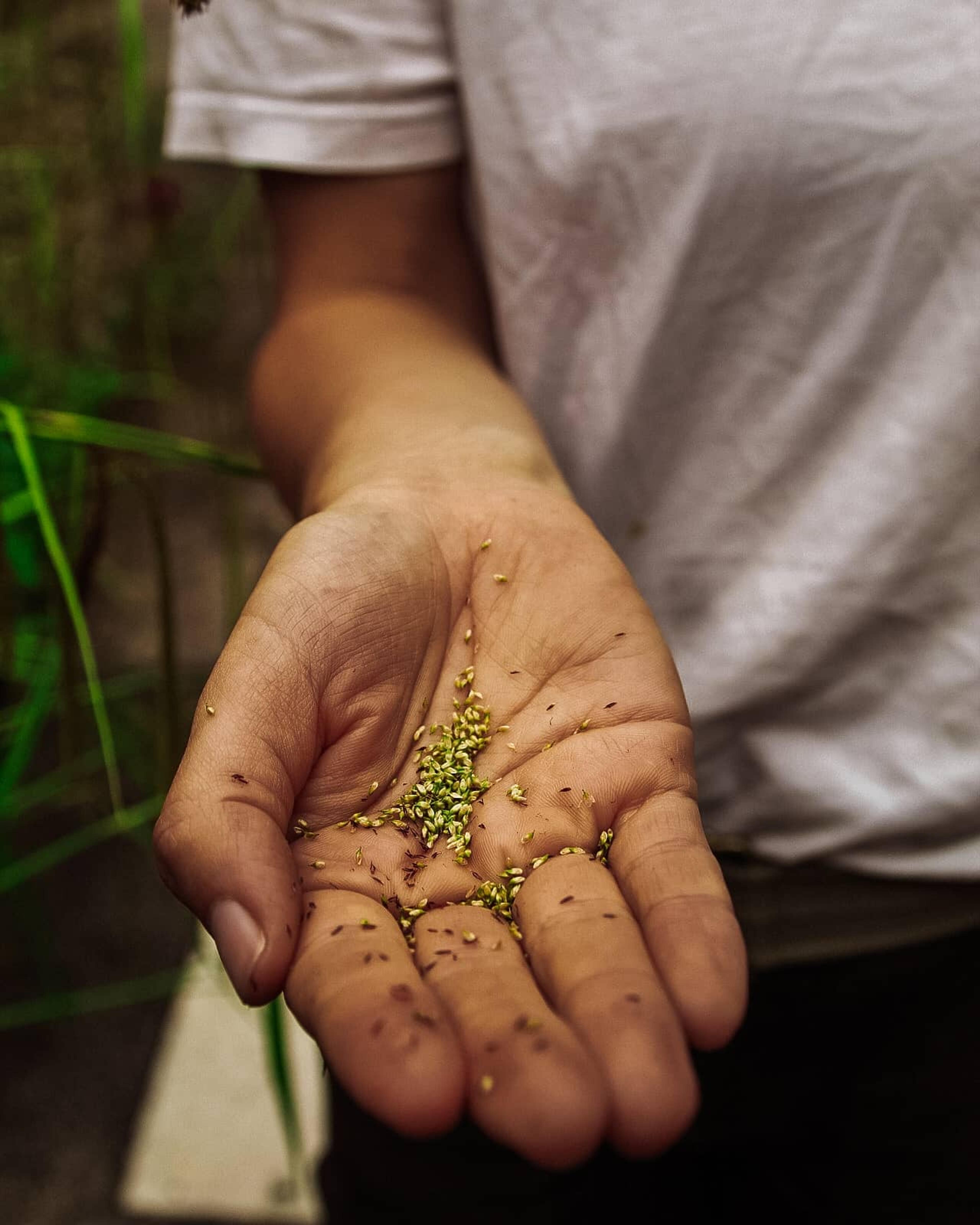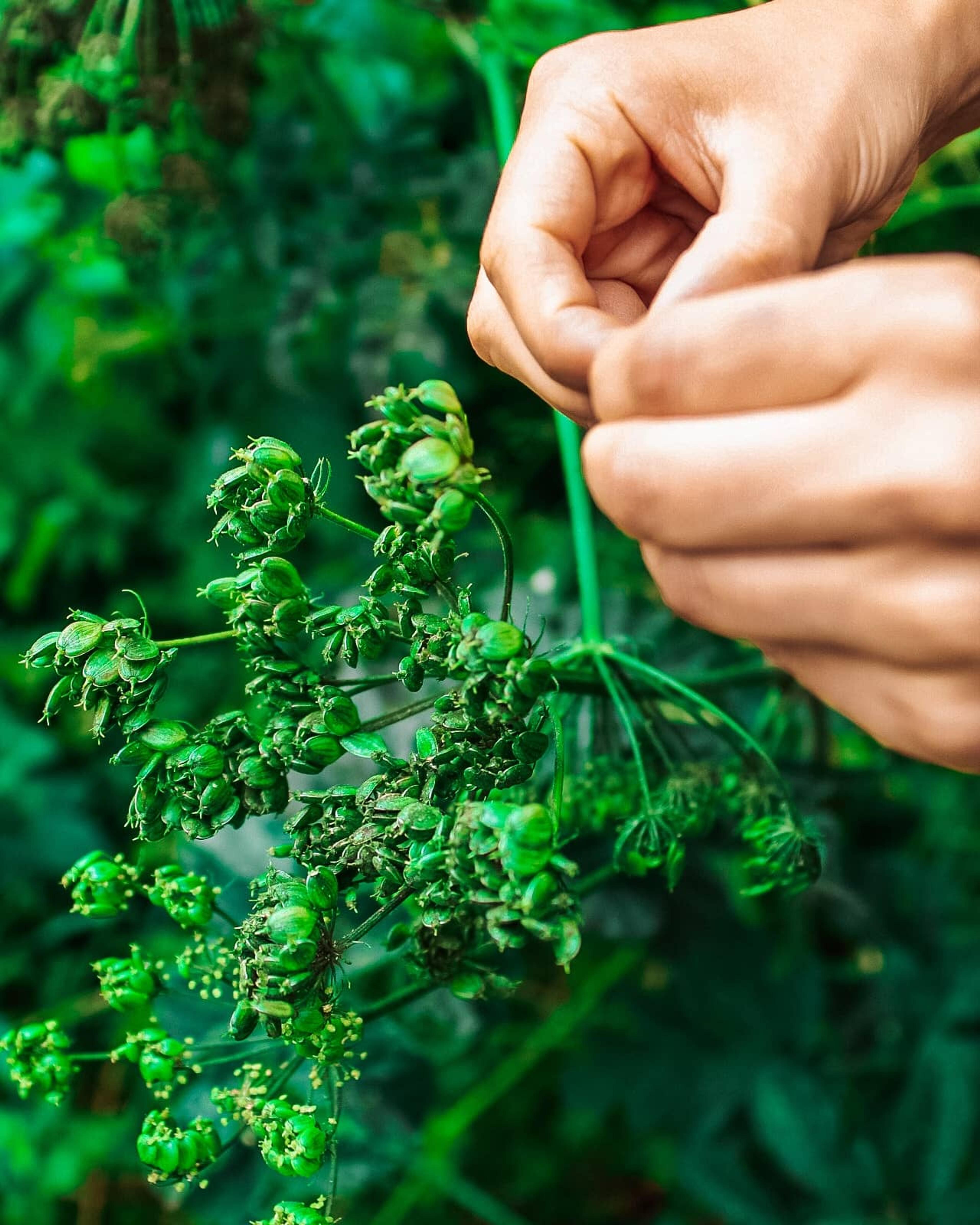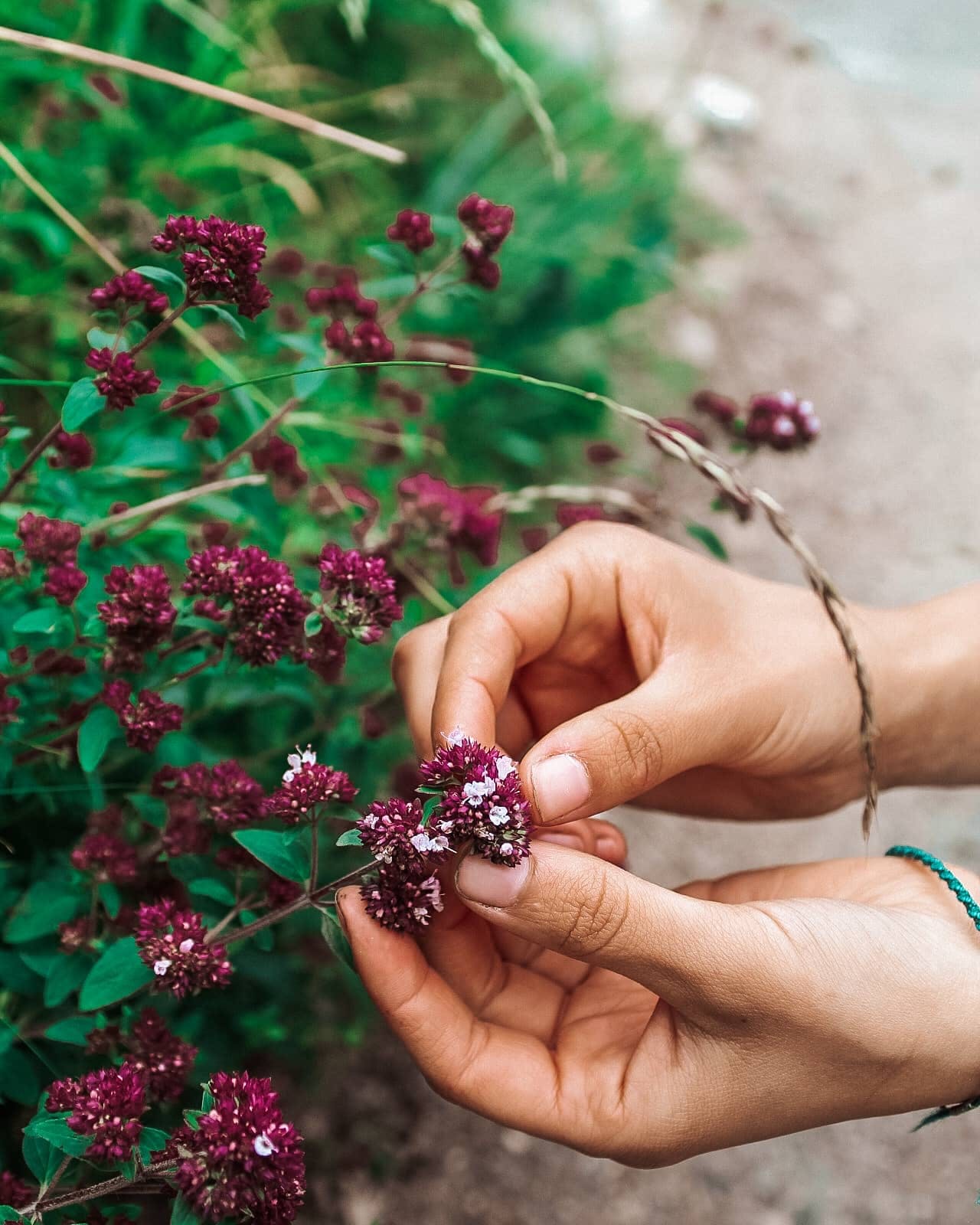“I promise, this won’t sting” Emanuelle assured me as she handed me a nettle leaf, patiently waiting for me to eat it. The trick, she assured me, was to smooth down the prickly fibres of the nettle leaf as you pick it, thus avoiding irritation. Flashbacks of a misjudged “ditch jump” filled my mind, painful, itchy memories of 11-year-old me landing in a nettle lined drainage ditch and regretting it at the end of year school disco. “Honestly, I eat these all the time” she added, sensing my apprehension. I popped the leaf into my mouth and gave it a chew. Sweet apple notes filled my mouth, the chewiness of crisp peel with an aftertaste of sweet Bramley. The unwelcome garden weed tasted remarkably good, so moreish in fact that I felt a bit silly for throwing mine on the compost heap for the last three decades.
I was on the Wild Food Foraging tour at Burleigh Court in the Cotswolds. Led by kitchen gardener and foraging expert, Emanuelle Paulson, we took a stroll beyond the hotel grounds and into the village on the lookout for edible treats, often overlooked by the untrained eye. After a quick safety briefing on what and what not to eat (“check. Double check. Triple check. Then check again”), we sauntered off down country lanes, sampling wild strawberries, lime leaves, and all manner of delicious goodies hiding in plain sight. Seeds that can be dried and ground for baking, flowers that can be eaten straight from the stem, it was a morning of delicious delicacies, storytelling, and an impromptu shower that failed to dampen our spirits. As we returned to the hotel for lunch, one question stuck in my mind: given we’re surrounded by so much good food ready for the forage, why aren’t we eating it?

Check, check, and check again
If you’re a millennial like me, then your fear of foraging is likely down to that one traumatic event that binds us as a generation: the episode of Wind in the Willows when Mole forages for wild mushrooms and finds himself at death’s door. It was horrifying and used by many parents as a strong message that we shouldn’t just eat what we find. Granted, this was before the days of Google and various apps that claim to identify wild plants for you, but the message was ingrained into many of us at a very young age: don’t eat the wild stuff. Ironically, this is the message that professional foragers like Emanuelle still push, but from a different angle: “there is so much out there that you can cook with, dry out, or eat raw, but you must check continuously and be 100% sure you know what you’re eating” she stressed. “Once you’re committed to cross-checking and playing safe, you’ll find yourself in a world of flavours that you simply cannot find at the supermarket”.
A step too far
The issue with foraging in the modern age is that people love to share “hot spots”. Stumbling across a vast patch of wild garlic is a coo that you may want to share on your socials, but doing so could result in over-picking, depleting supplies for other wildlife and resorting in a slower, less abundant growth next season. Whilst we’re still some way from swapping out Amazon Prime for the hedgerow, foraging is growing in popularity. Inexperienced learners may inadvertently trample much needed species, not knowing what they should be picking and what they should be protecting. Emanuelle’s advice for this is simple: “never stop reading. If possible, book yourself on a course like this so you can learn what to look for first hand. Never assume you know it all”.

Bonus time
Foraging expands biodiversity as well as your pantry: Subsidising some of your store cupboard regulars with wild grown alternatives helps reduce factory farming and food miles. Less factory farming means less agrochemicals such as pesticides and herbicides (which won’t feature on your foraged goodies either). Sensible foraging has nothing but positive benefits for the you and the environment, so don’t feel guilty if you find yourself feeling a little smug whilst supping your wild elderflower champagne.
The 5 Golden Rules of Foraging:
Only take what you need and leave the rest for wildlife. Birds, squirrels, bugs, all manner of creatures rely on what is available. Work on the 30/70 rule, where you only take up to 30% of what you find, leaving the rest for nature.
If in doubt, leave it out. If you cannot positively identify a plant after crosschecking multiple sources, don’t eat it. It is never worth the risk.
Be prepared: Take at least one guidebook, a small pair of scissors, and a small bag or Tupperware to transport your treasures home.
Keep a close eye on the weather: rain and humidity can cause some foraged treats to mildew or spoil. Plus, it’s not fun being stuck in a field with no coat.
Appreciate the experience and keep your expectations low. Just because a blackbird got to a cherry tree before you did, doesn’t mean the day is ruined. Make the most of getting outside and in nature, even if you do return home empty handed.

Eating the seasons
One of the most surprising lessons from my foraging experience was the variety of unused flavours available to us all. As a cook myself, finding flavour in plants and trees that I unassumingly walk past every day was a revelation. Suddenly, the flavours I affiliate with the seasons have changed. There is fresh were I assumed there was only spice, sweet where I expected to find bitter. Just getting out and looking, really looking, at what is around you, is worth the experience alone, even if you come home empty handed. To forage is to observe, to respect, to move, and to breathe. It’s about becoming more in tune with what was already around us, with what has since been blurred out by screens and sounds and deadlines. Buy a guidebook and attend a foraging course, you will not regret it. Just don’t be afraid to eat the nettles.
Debby Donnelly-Addison attended the Wild Foraging Experience at Burleigh Court with kitchen gardener, Emanulle Paulson. Group foraging experiences cost £69 per person or £138 per couple and can be booked online at Wild Food Foraging – Burleigh Court (burleighcourtcotswolds.co.uk)


Comments are closed.